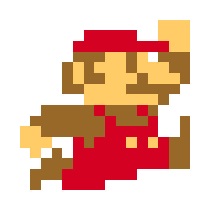
Composing by parameter is not the only way to write music, but it is rewarding. What you do is listen into the texture for individual elements and develop sensativity to how they affect musical expression across time. There are no formulas, but as you develop sensativity you develop awarenesss and understanding.
•Register. What is the highest note? What is the lowest? Around which notes is activity clustered?
•Density. How many lines or notes play concurrently? Are there registral gaps?
•Linear motion. Is there fundamental linear or scalar activity? Does it go up, down, or across?
•Rhythmic activity. How many attack points are there per measure?
•Rate of cycling. How often does the music repeat? At what level? Is that rate increasing, decreasing, or remaining the same?
•Clarity of pulse. How hard is it to tell where the beat is?
•Clarity of harmony. How hard is it to tell what the root is?
•Dissonance level. Which intervals are featured? Dissonant, imperfect, or perfect intervals?
•Space. Are there silences or moments with no attack points? How long are they? How often do they occur?
It’s impossible for every element to have a definable shape in every passage. Sometimes, for example, you can’t say whether or not the bulk of rhythmic activity is clustered in a particular register. Don’t worry. Focus on a few parameters or maybe just one. You’ll be surprised at the power of subtle changes.
Speaking of surprise, you can play with the listener’s expectations by shifting which parameters are the nexus of contrast. For example, this passage is about varying rates of rhythmic activity while that passage is about varying levels of density.
One final point, regarding why this type of thinking may be especially helpful to a game composer. Look at those individual elements again. Wouldn’t it be fun if they were tied to game states? There’s no reason not to try.
This will be the focus of upcoming collaborations and articles.
